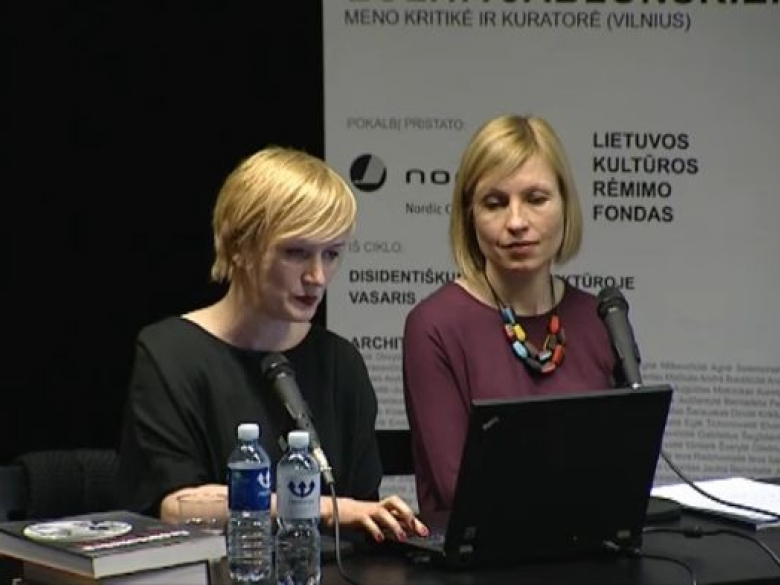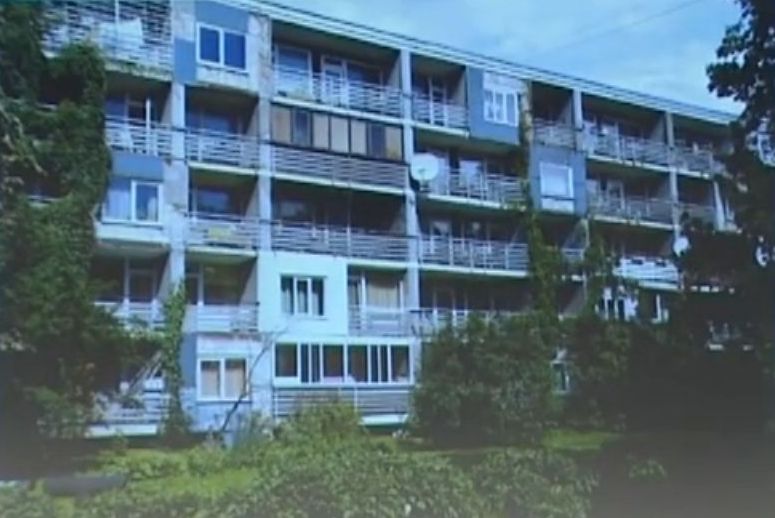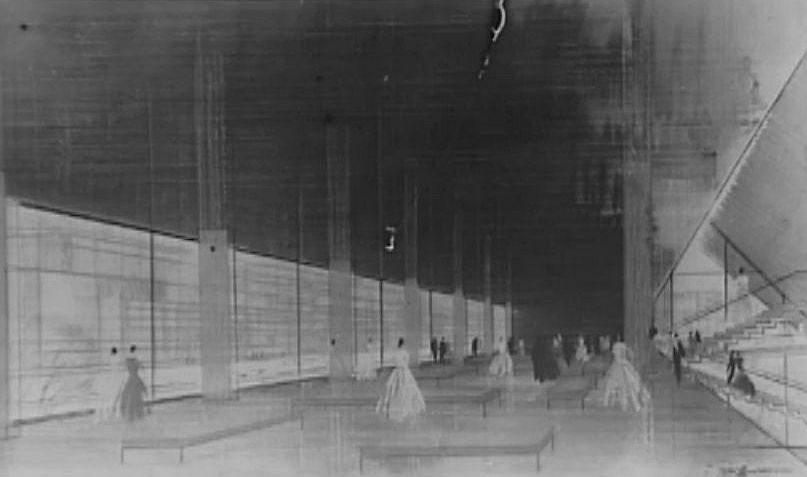- INTRODUCTION
- LECTURES
- Critical practices in the Architecture of the Baltic Region / An Introduction by Lolita Jablonskienė
- Ieva Zībārte / Uncensored Admiration. 10 Quiet Forms of Dissidence in the Life and Work of the Architect Marta Staņa
- Ingrid Ruudi / Critical Architecture between Prestroika and Independence? GROUP T Architects in Tallinn
- Marija Drėmaitė / Critical Practices in Lithuanian Architecture of the Soviet Period
- Andres Kurg / The Papers, Exhibitions and Buildings of the Tallinn School in Estonia
- Ivan Ristić / Bogdan Bogdanović – the Practice of Architecture under Changing Political Regimes in Yugoslavia
- INTERVIEWS
- ESSAYS
- Tor Lindstrand, Håkan Nilsson / Staging Subversive Opportunism in the Age of Feedback Loop
- Manuel Bürger / Slipping Through Templates. Limitation as a Tool of Control - A Design Observation
- Ethel Baraona Pohl / Emancipatory Architecture
- Jack Self / The Only Task of Architecture
- Eray Çayli / Turkey’s Construction Boom as Opportunity and Publicness as Medium of Subversion
- ABOUT

Ieva Zibarte and Marija Drėmaitė at the National Gallery of Art in Vilnius, 2013
IEVA ZĪBĀRTE
UNCENSORED ADMIRATION. 10 QUIET FORMS OF DISSIDENCE IN THE LIFE AND WORK THE ARCHITECT MARTA STAŅA
Good evening and thank you for having me here. Originally, I was going to talk about Baltic connections with the West, meaning each of the three countries, but when I saw that the audience was so young, I thought that I would introduce the Lithuanian students of architecture to the wonderful architect Marta Staņa, but before that I wanted to tell you about how I got into post-war architecture.
In 2001 I was living in London and I attended a retrospection of Lucienne and Robin Day at the Barbican gallery. I became absolutely fascinated by their design and also this was a time when Britain as a country was starting to recognize its post-war heritage. There were lots of discussions taking place about the Festival Hall and Centre Point, and also brutalist architecture. All these big important buildings were awarded heritage grades and deemed as important and valuable. And when I returned I went back to a more contemporary period and I did lots of reviews on modern architecture and contemporary architecture back in Riga in Latvia. I interviewed one Latvian architect living in Australia and we talked about the heritage of Latvian architecture and he asked: “why is everyone so interested in Art Nouveau?” This was a time when Art Nouveau and art déco were interesting and they were marketed as tourism products and so on. “Why are you not talking about post-war designs, why are you not talking about Marta Staņa – she’s got this amazing housing project and theatre in Riga?” And although I had studied architecture in Riga, I’d never heard of Marta Staņa – she was never mentioned.

Experimental house in Riga (1967), in 2010, picture from I. Zibarte's presentation at Architecture Fund lecture, 2013
This is how Marta Staņa’s experimental housing project looks like right now – how on earth can you explain to people that this is something important, something that they should preserve or save or promote it as an interesting thing? It looks so much different from what was designed and even different from when it was built in 1967. There probably will be pretty much similar examples here in Lithuania. So this was the start – this is how I discovered Marta Staņa. I wrote my first article on her in 2003, that’s exactly 10 years ago. She would have been 90 at a time, she died in 1972. And so that’s how I started my research; I started not as a scholar or as a teacher at university – I was a journalist. And I did this journalism based on investigation and interviews. In many ways it’s no different from what people at universities are doing. I did the same thing – I read old magazines and I interviewed people. It all developed and later I did a big exhibition. But when I was asked to participate in these talks and to talk about Marta Staņa as a dissident, I was very much against it, because she would be considered as a dissident. But then I thought it over and over again and I thought OK, we can speak about her as a dissident but of course as a very quiet dissident.
So, I will introduce you to ten quiet forms of dissidence along with Marta Staņa’s work. And just to remind you what dissidence means I have put up its definition from the Collins English Dictionary. It talks about a person who disagrees with the government. In some ways this was true about Marta Staņa, although she would never openly talk about it, but from what we see in her work it was dissidence.

Hotel Riga, competition entry, model, 1948-1949, picture from I. Zibarte's presentation at Architecture Fund lecture, 2013
So, the first example of dissidence in Marta Staņa’s work is of course Modernity. This is a competition entry which she did with her professor Ernests Štālbergs in the late 40’s. You know that in 1948-1949 there were still very strong Stalinist aesthetics. So this competition entry was way too modern and it was very heavily criticized, and of course it didn’t win.
Marta Staņa as an assistant to Ernests Štālbergs with students, ca. 1948, Latvian Museum of Architecture
And here is an example of students back in the 40’s – this young woman with dark hair and the old professor – that’s Marta Staņa and Ernests Štālbergs. They had a very close professional relationship, because Ernests Štālbergs was the only one who had stayed in Latvia [after the war] and who was teaching the Modern Movement and was leading workshops with the students who made very modern proposals. He was also an architect of the Freedom Monument in Riga (1935), but that’s another subject of course, so he was the only one who didn’t go abroad or wasn’t sent to Siberia and subsequently he worked at the University of Latvia with Marta Staņa as his assistant. They were forced to leave the university after there had been a cleansing procedure [purge]. So the reason behind Modernity was this close relationship with Štālbergs. And when they both left the university, Štālbergs was already quite old and could retire, but Marta Staņa had to work to support herself and fulfil her dream of becoming an architect.
Secondary school in Zvejniekciems. Photo by Maija Rudovska, 2010
Another example of dissidence is a Holistic Approach. In the late 50’s she designed a very interesting school that is still operating as a school today. Today some European energy efficiency project is going on, but the school still looks very much as it did when it was built. That was before all these standard schools started appear. She did this kind of Swiss-Finnish style architecture, where each classroom had its own entry and was naturally sun lit, and was connected to the nature. Amazing work – it has all the features that we are talking about now, such as fresh air and a healthy building. Later on, she suggested an extension with a swimming pool but it was never built. No one did designs like that in Latvia at that time.
Another form of dissidence would be Nationalism but in a very ornamental way, I would say. She was friends with, I couldn’t find the English name for them, but the craft masters who do textiles with Latvian ornaments. She was friends with Erna Rubene, they both did together these furniture collections incorporating Latvian folk ornaments. You can see quite a lot of such examples in Marta Staņa’s work.

Modern Art Galleries in Uzvaras Victory Park, 1967, picture from I. Zibarte's presentation at Architecture Fund lecture, 2013
Another form of dissidence would certainly be Transparency, whatever that means, I’ll leave this for you to contemplate. Her most famous project that you can still see in central Riga is Dailes Theatre – a very interesting project. There was a competition held in 1959, of which Marta Staņa was the surprise winner because there were many high profile architects participating who didn’t win. But obviously, I guess, it wasn’t that clean because first place wasn’t awarded at all, so she won the second prize. The main feature of her design was a glass foyer which was completely transparent – in a way this transparency was so naïve because nothing was transparent in those times. People were closing doors and, you know, gathering in kitchens and talking quietly about their lives. But she proposed very transparent architecture. Another one of her designs is the Art Gallery in Uzvaras Park with separate transparent boxes for each function.

Dailes Theatre in Riga, drawing of interior hall, 1964, picture from I. Zibarte's presentation at Architecture Fund lecture, 2013
And I’ve put dissidence in number 5 – Believing in the impossible. For the same foyer of the Dailes Theatre she proposed a large transparent hall with all the beautiful ladies in the drawing. Imagine the Soviet times and where one would go? Nevertheless, she would still keep designing these kinds of things – it seems impossible and I find it very dissident. She did window display designs for shops, she did all sorts of things and she was very good drawer, and a very good artist. In her drawings we see a world where people go on boats and wear wonderful clothes.
Going back to architecture, she was always one step too brave and I would say this was also a dissident move because the ideas of hers and other architects would never go together with the building quality and materials available at that time, but she would still propose these designs that were not possible to build. This is an example of a Viewing tower in the countryside on our highest hill Gaizinkalns. Later she simplified her proposal ‒ this was proposal number 2, which was built in a very different way in the 1980’s, a long time after her death and sadly this year it was demolished.

National theatre in Budapest, competition entry, 1965, picture from I. Zibarte's presentation at Architecture Fund lecture, 2013
This is another example of being one step ahead of many architects even in the West. She did this in the times of Modernism. It was a competition for the National Theatre in Budapest, and she suggested these already kind of deconstructed volumes that we can see much later in Postmodern designs and in the designs of female architects today.
I also suggest that one interesting and important form of dissidence in Marta Staņa’s life was Loyalty. She was very loyal to her profession and she was very loyal to her colleagues and friends. She would help without wanting payment and she would help students, she would promote her fellow workers ‒ she would design summer houses for them. This might not be such a happy and positive example but she also did designs for graveyards for her friends later in her life. And this is one of the most interesting examples which remains in a relatively good state ‒ there are not so many works that we can see today of Marta Staņa.
Just to add some buzz, I would put forward Numbers as a form of dissidence. When Marta Staņa participated in competitions she would always (when you do a competition entry you have to mark your work, so it doesn’t have your name on) name her competition entries by numbers, like 12345 or 111. Fellow architects would write something like “red cube” or “flame” or all these Soviet-kind of slogan titles. She won the theatre competition with 111, so she would have 555 or 12345, I decided to incorporate these numbers in an exhibition design in 2010 ‒ so this is her and her numbers. She never left any letters or diaries and we don’t know why she did it but it’s obvious from the documents.
Feminism is another theme that could be suggested. She didn’t start out as an obvious feminist. That is her and Andris Holtsmanis, it’s just before graduation, but it’s not any sort of boyfriend or girlfriend thing, they’re just friends at university. But her destiny was very interesting in the sense that she never married, never had any children and later developed very close relationships with female artists. And this is Erna Rubene ‒ we don’t actually know what Marta Staņa thought about the situation but Rubene also never married and never had any children. Rubene left quite a lot of written notes about her views and some of those views were definitely Marta Staņa’s views because they spent so much time together talking about these things. Erna Rubene once wrote very angrily about so-called spinsters who were not considered good because they were not having any children and in which she gave a strong opinion that they were indeed very very important in educating the younger generation and spending time with and teaching students.
As I mentioned earlier, Personal Choices was also a form of dissidence. Marta Staņa died from cancer ‒ she lived together with her sisters, who also never married and never had any children. She was not a Communist party member and she did not speak Russian. There are lots of stories yet to be discovered about that and this would give us more inside information on Staņa.
Every time I talk about Marta Staņa I hear questions such as: how on earth could she design? How could she know what was going on behind the Iron Curtain and be one step ahead? But architects from the Baltic countries knew ‒ they travelled a lot in groups and alone, they read magazines, they visited exhibitions, they organised discussion clubs, they watched (Swedish) movies, they wrote letters, they listened to the radio, they had great teachers, they had knowledge, and they were connected.




